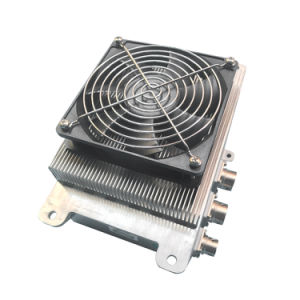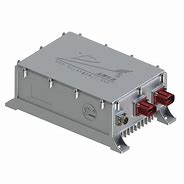In the world of electric vehicles (EVs), on board charger play a critical role in ensuring that EV owners have the ability to conveniently recharge their vehicles. One important aspect of an on-board charger is its level, which can have a significant impact on charging times and convenience.
To understand what on board charger level means, it's helpful to first understand the concept of charging levels in EVs. There are three commonly recognized charging levels:
Level 1 charging: This is the slowest type of charging, and involves using a standard 120-volt electrical outlet to charge the vehicle. Level 1 charging typically provides a charge rate of around 3-5 miles of range per hour, which means that it can take up to 24 hours to fully recharge a typical EV battery using this method.
Level 2 charging: This involves using a dedicated charging station or a higher-powered electrical outlet to charge the vehicle. Level 2 charging typically provides a charge rate of around 25-30 miles of range per hour, which means that a typical EV battery can be fully recharged in 4-8 hours using this method.

Level 3 charging (also known as DC fast charging): This is the fastest type of charging, and involves using a specialized charging station that delivers a high-powered DC current directly to the vehicle's battery. Level 3 charging can provide a charge rate of up to 350 miles of range per hour, which means that a typical EV battery can be charged to 80% capacity in as little as 30 minutes using this method.
Now, back to on board charger level. An on-board charger is rated according to the maximum charging rate it can deliver to the vehicle's battery. The three levels of on-board chargers are typically rated as follows:
Level 1 on board charger: This is the slowest type of on-board charger, and is typically rated at 1.2 to 1.4 kilowatts (kW). This means that it will take longer to fully recharge an EV battery using a Level 1 on-board charger than it would using a higher-level charger.
Level 2 on board charger: This is the most common type of on-board charger found in EVs today, and is typically rated at 6 to 7 kW. This means that it can provide a significantly faster charging rate than a Level 1 charger, and can fully recharge a typical EV battery in 4-8 hours, depending on the size of the battery.
Level 3 on board charger: This is the fastest type of on-board charger, and is typically rated at 50 to 150 kW or higher. This means that it can provide a very fast charging rate, and can recharge a typical EV battery to 80% capacity in as little as 30 minutes.

It's important to note that the charging rate provided by an on-board charger is also influenced by the charging station being used. For example, even if an EV has a Level 3 on-board charger, it will not be able to charge at the full 150 kW rate if it is connected to a Level 3 charging station that only provides a maximum charging rate of 50 kW.
In summary, on-board charger level is an important consideration for EV owners, as it can have a significant impact on charging times and convenience. EVs with higher-level on-board chargers are generally more expensive, but can provide faster and more convenient charging options for owners who frequently need to recharge their vehicles.
Contact Person: Miss. Kiki
| WhatsApp : | +8617763224709 |
|---|---|
| Skype : | +8617763224709 |
| WeChat : | +8617763224709 |
| Email : | kiki@lifepo4-battery.com |